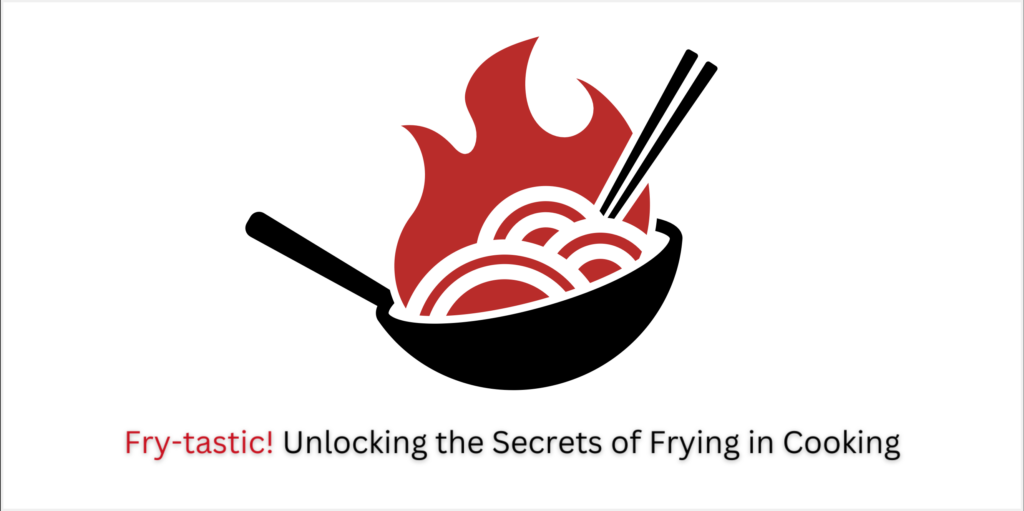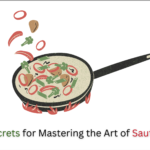Basics of frying
We’re going to look into the basics of frying in this article. Frying is one of the oldest and most widely used cooking methods. It is an excellent way to enhance the flavour, texture, and delectability of any dish. Whether you’re a novice or an experienced cook, learning the fundamentals of frying can help you create delectable dishes. In this article, we’ll go over everything you need to know about frying in cooking, from the various types of frying to the health risks involved.
Introduction to Frying in Cooking
In frying, food is submerged in hot oil while being cooked. The temperature of the oil in this cooking method can range from low to high depending on the type of food being cooked. It enhances the flavour and texture of food while also producing a crispy, golden-brown exterior. We can fry chicken, fish, vegetables, and even desserts.
Frying is thought to have originated in the Mediterranean region in the 16th century. Fried food has become an essential component of many cuisines around the world due to its ease of preparation, deliciousness, and convenience. It eventually spread to other parts of the globe.
Benefits of Frying in Cooking
Frying is an excellent method for adding flavour and texture to food. It prevents food from losing nutrients during the cooking process and also aids in the retention of moisture. Frying is a quick and simple cooking method of food preparation, making it perfect for busy households and those with little spare time in the kitchen. Frying also gives food a delicious crunchy texture, making it a popular choice for snacks, appetizers, and meals.
Different Types of Frying
To know the basics of frying, you should be aware of the various frying methods. The most common types are shallow frying, deep frying, pan frying, and stir-frying.
- Shallow frying is a cooking technique that uses only a thin layer of oil to cook food. Smaller pieces of food, such as fish fillets and chicken nuggets, are usually cooked in this frying method.
- Deep frying entails immersing food in hot oil. This frying method is used for larger foods like chicken wings, French fries, and onion rings.
- Pan frying is a method of cooking food in a skillet or pan with a thin layer of oil. Smaller pieces of food, such as fish fillets and chicken nuggets, are typically cooked in this frying method.
- Stir-frying is a cooking method in which food is cooked in a wok or pan with a small amount of oil. This frying method is commonly used to prepare vegetables, noodles, and rice.
Choosing the Right Cooking Oil for Frying
Choosing the right frying oil is critical for achieving the perfect fry. This is one of the basics of frying. Because different oils have different smoke points and flavours, selecting the right oil for the type of food you’re cooking is crucial. Gingelly oil, Groundnut oil, Coconut oil, and Olive oil are some of the most popular frying oils. Each of these oils has a distinct flavour and smoking point.
Preparing Food for Frying
To help ensure that the food cooks evenly and without splattering, ensure it is dry and free of excess moisture before frying.
You should also pat it dry with paper towels if you’re frying meat. This will aid in the removal of excess moisture and the prevention of splattering.
If you’re frying vegetables, ensure they’re all the same size, so they cook evenly. Finally, season the food before frying it for extra flavour.
Tips for Getting the Perfect Fry
To master the basics of frying, use the following pointers that will help you get the perfect fry:
- Before adding the food, preheat the oil. This will help to ensure even cooking and prevent splattering.
- Avoid overcrowding the pan. This ensures that the food cooks evenly and that there is no splattering.
- Use the appropriate oil for the type of food you’re cooking. Because different oils have different smoke points and flavours, choose the one that best complements the food you’re preparing.
- Do not leave the food frying unattended. This will help to prevent the food from burning or becoming soggy.
- Before serving, drain the food on paper towels. This will help to remove any excess oil and improve the taste of the food.
Popular Dishes That Are Fried
Fried food is prevalent throughout the world. Some of the most well-known fried foods are listed here:
- French fries
- Chicken wings
- Fish and chips
- Onion rings
- Chicken nuggets
- Spring rolls
- Doughnuts
Health Concerns with Frying
Frying is a popular cooking method, but it’s important to keep the basics of frying in mind. You should be aware of the health concerns associated with it. Frying food in oil can increase the fat and calorie content of the food, which can also increase the likelihood of heart disease and other health conditions. Using the right amount of oil and limiting your consumption of fried food is also essential.
Different Frying Equipment
Several different pieces of equipment can be used for frying. The most common pieces of frying equipment include deep-fryers, skillets, Dutch ovens, and woks.
- Electric deep fryers use thermostats and baskets that monitor the temperature of the oil. This equipment is ideal for deep-frying chicken wings and French fries.
- Skillets are suitable for shallow-frying fish fillets and chicken nuggets.
- Dutch ovens are ideal for deep-frying chicken wings and French fries.
- Woks are great for stir-frying vegetables, noodles, and rice.
Conclusion
Various foods can be prepared using the common cooking technique known as frying. From french fries to chicken wings, this cooking method can add flavour, texture, and deliciousness to any dish. However, it’s crucial to use suitable cooking oil and to be aware of the health risks connected to frying.
A great way to add flavour and texture to food is to fry it, but it is crucial to understand the fundamentals of frying before you begin. In order to create delicious dishes, you need to master the basics of frying, from selecting the right cooking oil to preparing food for frying.
With the appropriate equipment and a little bit of practice, you’ll be able to create delicious and crispy fried dishes in no time!
Happy frying!



